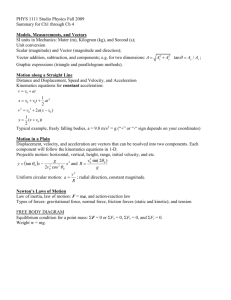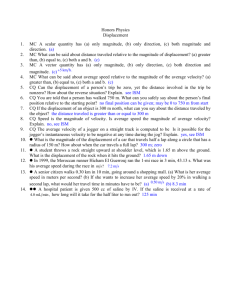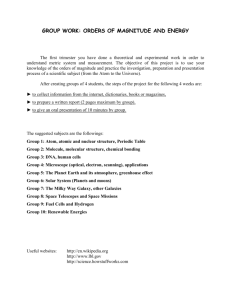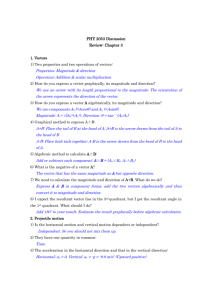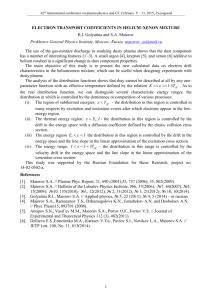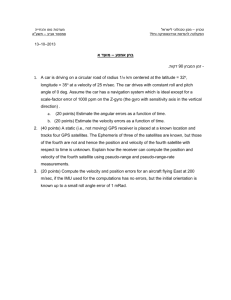CurrentCTb
advertisement
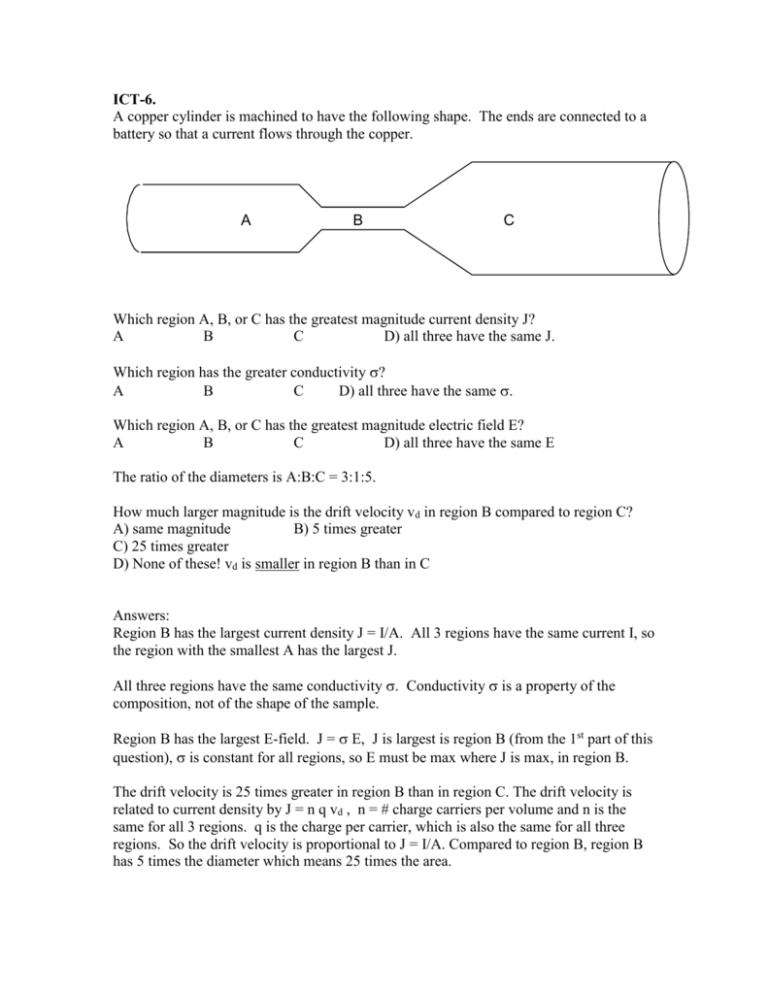
ICT-6. A copper cylinder is machined to have the following shape. The ends are connected to a battery so that a current flows through the copper. A B C Which region A, B, or C has the greatest magnitude current density J? A B C D) all three have the same J. Which region has the greater conductivity ? A B C D) all three have the same . Which region A, B, or C has the greatest magnitude electric field E? A B C D) all three have the same E The ratio of the diameters is A:B:C = 3:1:5. How much larger magnitude is the drift velocity vd in region B compared to region C? A) same magnitude B) 5 times greater C) 25 times greater D) None of these! vd is smaller in region B than in C Answers: Region B has the largest current density J = I/A. All 3 regions have the same current I, so the region with the smallest A has the largest J. All three regions have the same conductivity . Conductivity is a property of the composition, not of the shape of the sample. Region B has the largest E-field. J = E, J is largest is region B (from the 1st part of this question), is constant for all regions, so E must be max where J is max, in region B. The drift velocity is 25 times greater in region B than in region C. The drift velocity is related to current density by J = n q vd , n = # charge carriers per volume and n is the same for all 3 regions. q is the charge per carrier, which is also the same for all three regions. So the drift velocity is proportional to J = I/A. Compared to region B, region B has 5 times the diameter which means 25 times the area. ICT-7 Salt water contains n sodium ions (Na+) per cubic meter and n chloride ions (Cl– )per cubic meter. A battery is connected to metal rods that dip into a pipe filled with salt water. The cross-sectional area of the pipe is A. + - A ammeter pipe full of salt water The magnitude of the drift velocity of the Na ions is v+ and the magnitude of the drift velocity of the Cl ions is v– Assume v+ > v– What is the magnitude of the ammeter reading? A) enAv+ – enAv– B) enAv+ + enAv– C) enAv+ D) enAv– E) zero Answer: enAv+ + enAv– Notice that v+ and v- are the magnitudes of the drift velocities, so they are both positive by definition. A current of (+) charges to the right is equivalent to a current of (–) charges to the left, so the currents due to the 2 types of ions add. They do not cancel.
